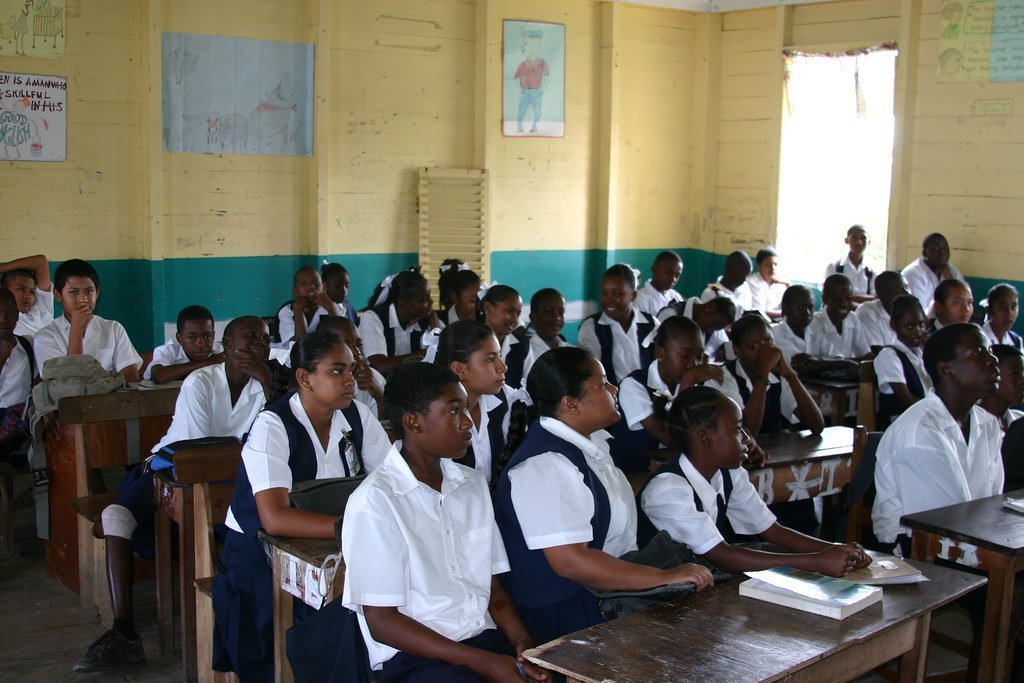Close

In keeping with its pledge to modernize education across Guyana, the Government of Guyana has introduced significant technological advancements to secondary schools in Region 10 (Upper Demerara–Berbice), particularly in Linden. Through the deployment of the Guyana Digital School platform and the distribution of laptops to students and teachers, the government is actively closing the digital divide and opening new pathways to global knowledge.
The Guyana Digital School platform, an initiative developed under the Ministry of Education’s education technology strategy, offers a robust suite of learning tools including interactive lessons, digital textbooks, and virtual assessments. Linden’s secondary schools are now directly integrated into this system, enabling students to engage with educational content beyond the confines of traditional classrooms. This transformation reflects the government’s drive to make education more inclusive, adaptive, and future-ready.
As part of this initiative, hundreds of laptops have been distributed to both students and educators across Region 10, a move that ensures equitable access to the digital tools required to navigate and thrive in a modern learning environment. According to the Ministry of Education, the devices are preloaded with educational software, offline resources, and are configured for safe and monitored usage.
Honourable Minister of Education, Priya Manickchand, has emphasized that these technological upgrades are more than symbolic—they are instrumental in building a resilient, ICT-capable generation ready to contribute to the digital economy. “We are equipping students not just with devices, but with the skills and opportunities to connect with the rest of the world,” she noted during a school visit in early 2025.
Local teachers in Linden have also undergone training to integrate digital tools into their lesson delivery, supported by partnerships with the National Centre for Educational Resource Development (NCERD). These sessions focus on using digital platforms to personalize learning, enhance classroom engagement, and monitor academic performance.
This holistic approach marks a clear shift in the educational landscape of Region 10, aligning with the national development goal of a knowledge-based economy. By expanding the digital footprint in schools, the government is not just providing screens—it is offering students a window to the world and the tools to shape their future.
This is what real progress looks like.

The Guyana Project is an independent media platform delivering fact-checked, ground-level reporting on politics, economy, and public life in Guyana. With a focus on transparency and development, we bring unfiltered news and thoughtful analysis to help shape a more informed, forward-looking nation.


Lorem Ipsum is simply dummy text of the printing and typesetting industry. Lorem Ipsum has been the industry’s standard dummy text ever since the 1500s, when an unknown printer took a galley of type and scrambled it to make a type specimen book. It has survived not only five centuries, but also the leap into electronic typesetting, remaining essentially unchanged. It was popularised in the 1960s with the release of Letraset sheets containing Lorem Ipsum passages, and more recently with desktop publishing software like Aldus PageMaker including versions of Lorem Ipsum.
t is a long established fact that a reader will be distracted by the readable content of a page when looking at its layout. The point of using Lorem Ipsum is that it has a more-or-less normal distribution of letters, as opposed to using ‘Content here, content here’, making it look like readable English. Many desktop publishing packages and web page editors now use Lorem Ipsum as their default model text, and a search for ‘lorem ipsum’ will uncover many web sites still in their infancy. Various versions have evolved over the years, sometimes by accident, sometimes on purpose (injected humour and the like).
Contrary to popular belief, Lorem Ipsum is not simply random text. It has roots in a piece of classical Latin literature from 45 BC, making it over 2000 years old. Richard McClintock, a Latin professor at Hampden-Sydney College in Virginia, looked up one of the more obscure Latin words, consectetur, from a Lorem Ipsum passage, and going through the cites of the word in classical literature, discovered the undoubtable source. Lorem Ipsum comes from sections 1.10.32 and 1.10.33 of “de Finibus Bonorum et Malorum” (The Extremes of Good and Evil) by Cicero, written in 45 BC. This book is a treatise on the theory of ethics, very popular during the Renaissance. The first line of Lorem Ipsum, “Lorem ipsum dolor sit amet..”, comes from a line in section 1.10.32.